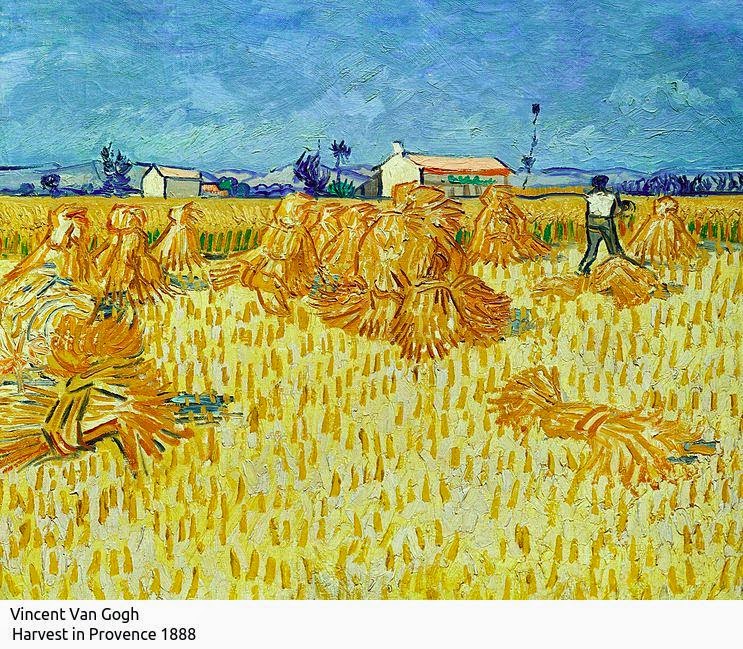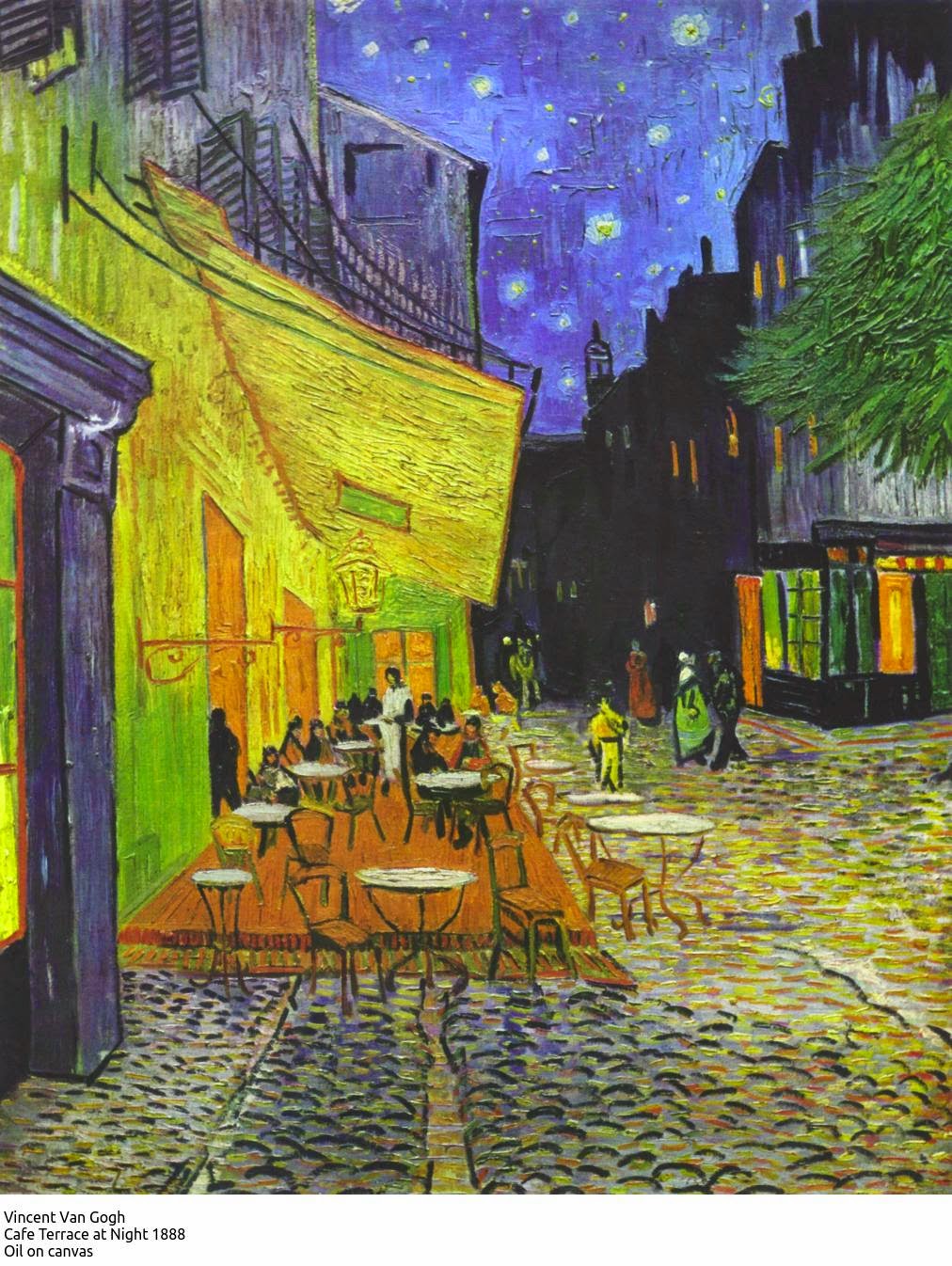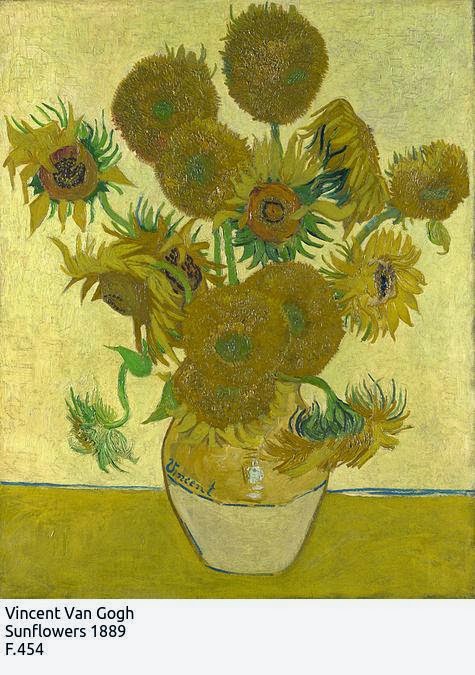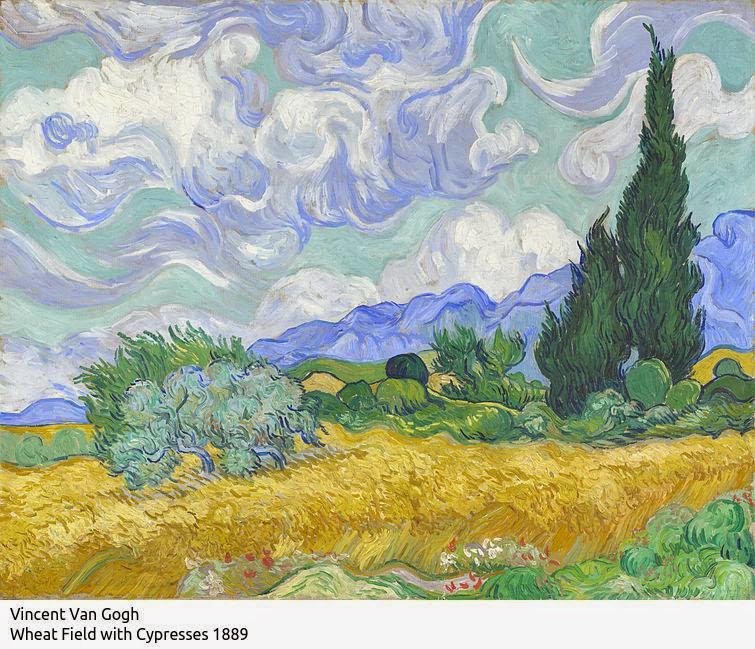Vincent Willem van Gogh 1853-1890
Early Life
Vincent van Gogh was part of a prestigious, Dutch family and had relatives who were highly influential, from Rear Admirals to senior academics, although his own father and grandfather were middle class pastors in the protestant, Dutch Reformed Church.
Vincent was born in 1853 in the town of Zundert in the Catholic province of North Brabant on the Belgian border.
He had an elder brother who was also called Vincent who died shortly after birth and was buried in the church graveyard. As a child van Gogh would walk to the family church past a gravestone bearing the name “Vincent van Gogh”. Vincent also had two younger brothers and three younger sisters. His brother Theo was four years younger than him but was to play a pivotal role in his later life.
Vincent was educated at the municipal school from 7-8 years old and at home by three separate governesses between 8 and 11 years of age. At 11 he was sent to a private boarding school run by Jan Provily in Zevenbergen. He seems to have had the usual homesickness of a eight year old at boarding school, later, as an adult, he told his parents that:
“I thought of the day you took me there and I stood on Mr Provily’s steps and watched your carriage driving away down the wet street. And then the evening when my Father came to visit me for the first time. And that first homecoming at Christmas.” (Ramsgate, 17 April 1876.)
From 13 to 15 (1866-1868) he attended the Koning Willem II school in Tilburg. He stayed at a boarding house in town run by the Hanniks family.
His first art teacher was Constantijn Huysmans, a professional artist, who taught the young Vincent basic drawing and composition.
His early educational background was a bit like that of wealthy English children in the nineteenth and much of the twentieth century: governesses and boarding school. This leaves the child with a feeling of being unloved and unwanted and turns the child towards their peers for a superficial level of support, fostering sociability but lacking intimacy ( see for instance: Boarding School Survivors ). The school supplies the key to how to be loved again: strive, get academic results, succeed.
Early working life 1869 - 1876
Vincent started work at the age of 16. One of his uncles, Vincent “Cent” van Gogh, was a partner in the prominent, international art dealers, Goupil & Cie, and he found Vincent a job in The Hague branch. The English analogy is getting a job at Sothebys because your uncle runs the company. At first Vincent did well at work and at the tender age of 20 was transferred to London to help grow the small London business.
He seems to have been too young to be stable in a foreign land. He became increasingly interested in religion and the standard of his work declined. It is rumoured that he fell in love with his landlady's daughter, Eugenie Loyer, proposed marriage and was turned down by her because she was already engaged. Shortly afterwards, at the age of 22, he was transferred to the Paris branch where he was asked to resign for arguing with the customers and left in March 1876. This would scarcely have endeared him to the Van Gogh family.
Religious Sentiment
Vincent cannot be understood as an artist without understanding his religious sentiment. When he first realised his religious calling he tried to become part of the religious establishment.
Shortly after getting the sack from Goupils Vincent went back to England to an unpaid teaching post in Ramsgate from April-June 1876 . Between July and December he worked for a school run by the Congregationalist Reverend Thomas Slade-Jones and preached his first sermon in Richmond.
At the age of 24 (1877) Vincent went to study at the theology school in Amsterdam. He stayed with his uncle, Johannes Stricker, who was a leading Dutch theologian. Vincent failed his entrance exams . He then took, but failed, a three-month course at the Vlaamsche Opleidingsschool, a Protestant missionary school in Laeken, near Brussels. Having failed in the conventional path to becoming a preacher, In January 1879, aged 26, he took a six month post as a missionary in the village of Petit Wasmes in the coal-mining district of Borinage in Belgium. Van Gogh lived in abject poverty, sleeping on straw in a small hut at the back of the baker's house where he was staying. The baker's wife reported hearing van Gogh sobbing at night in the hut. He was sacked from his post for "undermining the dignity of the priesthood."
He returned home to his family and in mid-March 1880, aged 27, his father tried to have him committed to a mental asylum and Vincent fled from home.
Vincent's religious sentiment was personal and seems to have been based on some type of “religious experience” in which God is directly evident in the world, he wrote in a letter to Theo:
“But, you will say, what a dreadful person you are, with your impossible religious notions and idiotic scruples. If my ideas are impossible or idiotic then I would like nothing better than to be rid of them. But this is roughly the way I see things. …. I think that everything that is really good and beautiful, the inner, moral, spiritual and sublime beauty in men and their works, comes from God, and everything that is bad and evil in the works of men and in men is not from God, and God does not approve of it.”... “Try to grasp the essence of what the great artists, the serious masters, say in their masterpieces, and you will again find God in them.” Letter to Theo. Cuesmes, July 1880
A Change of Heart: Dedication to Art
“I should be very happy if you could see in me something more than a kind of idler. For there is a great difference between one idler and another idler. There is someone who is an idler out of laziness and lack of character, owing to the baseness of his nature. If you like, you may take me for one of those. Then there is the other kind of idler, the idler despite himself, who is inwardly consumed by a great longing for action who does nothing because his hands are tied, because he is, so to speak, imprisoned somewhere, because he lacks what he needs to be productive, because disastrous circumstances have brought him forcibly to this end. Such a one does not always know what he can do, but he nevertheless instinctively feels, I am good for something! My existence is not without reason! I know that I could be a quite a different person! How can I be of use, how can I be of service? There is something inside me, but what can it be? He is quite another idler. If you like you may take me for one of those.” Letter to Theo. Cuesmes, July 1880
A month later Vincent has embarked on his life as an artist:
“I must tell you that I am busy sketching large drawings after Millet, and that I have already finished “The Four Hours of the Day “as well as “The Sower.” Letter to Theo. Cuesmes, 20 August 1880
The Van Gogh Museum in Amsterdam divides Vincent's work into five artistic periods:
Early work from 1880-1886
Paris 1886-1888
Arles 1888-1889
Saint Remy 1889-1890
Auvers 1890
Dutch Art in 1880
Vincent began his artistic career in earnest in 1880 and he was influenced by the ambient artistic environment in Holland at that time.
“Although I like Baudry and others, such as Lefebvre and Henner, too - I greatly prefer Jules Breton, Feyen-Perrin, Millet, Ulysse Butin, Mauve, Artz, Israëls, etc., etc.” Letter to Van Rappard 15th October 1881
His favourite artists when he started his artistic career, whether Dutch or French, were fond of rustic, realist compositions.
Early Work 1880-86 Learning to paint.
Vincent had worked for Goupils who were sellers of engravings and lithographs as well as fine art. He illustrated many of his letters with drawings and was no stranger to sketching.
As early as 1877 he was able to borrow Charles Bargue's “Cours de Dessin”, one of the most influential classical drawing courses, from Goupil's. This got him started in the techniques of drawing.
He was particularly influenced by the French artist, Jean Francois Millet (1814-1875). Millet shared Vincent's love of the peasant life. He wrote to Theo 20th August 1880: “I must tell you that I am busy sketching large drawings after Millet, and that I have already finished “The Four Hours of the Day “as well as “The Sower.” ”. “The Sower” was to be an important theme in Vincent's future paintings.
Brussels and Etten
In October 1880, at 27 years old, he enrolled in the Royal Academy of Art in Brussels for six months and met the artist Anthon Van Rappard. Van Rappard had considerable influence over Van Gogh's early work. A recent study shows that the two artists worked closely together between 1880 and 1885 and shared techniques, and possibly even painting materials.
They certainly shared subject matter:
After a row with his long suffering parents on Xmas Day 1881 he moved to The Hague and stayed at various addresses until moving back with his parents who had now moved to Nuenen
Vincent's early work produced at least two masterpieces.
Sorrow
“Of course I don't always draw this way, but I'm very fond of the English drawings done in this style, so no wonder I tried it for once; and as it was for you, and you understand these things, I didn't hesitate to be rather melancholy.” Vincent van Gogh to Theo van Gogh
The Hague, c. 10 April 1882
Clasina Maria Hoornik (1850 – 1904), “Sien”, lived with van Gogh in The Hague. Van Gogh used Sien, a pregnant prostitute, as a model for his work and later took Sien and her daughter into his home. It contributed to a split with Anton Mauve, a cousin-in-law and noted painter of the Hague School. At his brother Theo's urging, van Gogh left Sien in 1883 to paint in Drenthe.
Sien resumed her life as a seamstress, cleaning woman and likely prostitute before marrying in 1901. On 12 November 1904, aged 54, she threw herself into the Schelde river and drowned, fulfilling a prophecy she had made to van Gogh in 1883: "Yes, I'm a whore ... it’s bound to end up with me jumping into the water."
The Potato Eaters
The most famous painting of Van Gogh's Early Work is “The Potato Eaters”. Van Gogh explains his technique of producing numerous studies and then putting these to one side and painting freshly, straight on the canvas:
“I will not send the potato eaters unless I know for sure there is something in it.
But I am getting on with it, and I think there are completely different things in it than you can ever have seen in my work. At least, so distinctly.
I mean from life especially. I paint this from memory on the picture itself. But you know yourself how many times I have painted these heads!
And then I drop in every night to correct some details on the spot.
But in the picture I give free scope to my own head in the sense of thought or imagination, which is not so much the case in studies, where no creative process is allowed, but where one finds food for one's imagination in reality, in order to make it exact.” Vincent van Gogh to Theo van Gogh
Nuenen, late April 1885
According to Vincent this technique was used by Delacroix (1798-1863), one of the most famous and accomplished artists of the previous half century. Examples of some of the studies for the Potato Eaters are shown below.
The completed work was quite extraordinary:
although it carries a hint of caricature.
In January 1886 Vincent started a term at the Antwerp School of Art. Unfortunately he was not suited to the classical approach to art, as is recorded by one of his fellow students:
“One day in the drawing class of the Academy of Antwerp, the students were given, as if by chance, a cast of the Venus de Milo to copy. Van Gogh, struck by one of the essential characteristics of the model, strongly accentuated the width of her hips and subjected the Venus to the same deformations that he brought to The Sower by Millet and The Good Samaritan by Delacroix--other works which he was also to copy in the course of his career. The beautiful Greek goddess had become a robust Flemish matron. When the honest M. Sieber saw this he tore Van Gogh’s sheet of paper with the furious strokes of his crayon, correcting his drawing while reminding him of the immutable canons of art.
Then the young Dutchman . . . whose gruffness had frightened off the refined female clientele at Goupil’s in Paris, flew into a violent rage and shouted at the horrified professor: “You clearly don’t know what a young woman is like, God damn it! A woman must have hips, buttocks, a pelvis in which she can carry a baby!” This was the last lesson that Van Gogh took--or gave--at the Academy of Antwerp. There he had made some staunch friends among the students, especially among the English, such as Levens . . . With those who understood him, who sensed his nascent genius, he showed himself to be communicative, enthusiastic, and fraternal. Very often he spoke to them of the rough and good-hearted miners of the Borinage whom he had catechized, cared for, and helped with so much love. During the tragic strikes of 1886, he even wanted to return to that black country.” Victor Hageman
Interviewed by Louis Piérard
(Published January, 1914)
Paris 1886-1888
Vincent left for Paris in mid March 1886. He had managed to develop from being a novice in 1880 to becoming an “artist's artist”, producing paintings that were at the cutting edge of the rapidly developing ideology of painting in the 1880s. Unfortunately his art was now too sophisticated to sell to the general public.
Vincent worked in the studio of Fernand Cormon for 3 months, Cormon was a successful realist painter.
Vincent's great discovery in Paris was colour:
“And now for what regards what I myself have been doing, I have lacked money for paying models, else I had entirely given myself to figure painting but I have made a series of colour studies in painting simply flowers, red poppies, blue corn flowers and myosotis [Forget-me-not]. White and rose roses, yellow chrysantemums – seeking oppositions of blue with orange, red and green, yellow and violet, seeking THE BROKEN AND NEUTRAL TONES to harmonise brutal extremes.
Trying to render intense COLOUR and not a grey harmony.
Now after these gymnastics I lately did two heads which I dare say are better in light and colour than those I did before.
So as we said at the time in COLOUR seeking life, the true drawing is modelling with colour.” Letter to Horace Mann Livens, Paris, September or October 1886.
The discovery of complementary colours was to be pivotal to Vincent's future paintings. He first mentions the power of complementary colours in 1884, whilst still in his Early period:
“But I mean it isn’t easy to find the effect of a summer sun that’s as lush and as simple and as pleasant to look at as the characteristic effects of the other seasons.
The spring is tender green (young wheat) and pink (apple blossom)
The autumn is the contrast of the yellow leaves against violet tones.
The winter is the snow with the little black silhouettes.
But if the summer is the opposition of blues against an element of orange in the golden bronze of the wheat, this way one could paint a painting in each of the contrasts of the complementary colours (red and green, blue and orange, yellow and violet, white and black) that really expressed the mood of the seasons.” Letter to Theo van Gogh. Nuenen, on or about Wednesday, 2 July 1884.
By 1885 Vincent had become well versed in Colour Theory and was primed to start work in the sunshine of Paris and was especially interested in complementary colours as he shows in this letter to Theo:
“Each of the three primary colours is rightly called Complementary in relation to the binary colour that corresponds with it. Thus blue is the complementary of orange, yellow is the complementary of violet, and red the complementary of green. Vice versa, each of the composite colours is the complementary of the primary colour not used in the mixture. This reciprocal heightening is what’s called the law of simultaneous contrast.” Letter to Theo van Gogh. Nuenen, on or about Saturday, 18 April 1885.
This letter contains a good exposition of Vincent's understanding of Colour Theory. (See http://vangoghletters.org/vg/letters/let494/letter.html#translation )
At this stage Vincent was still studying the work of other artists and his still life's can be seen to be influenced particularly by Adolphe Joseph Thomas Monticelli (1824–1886), Vincent having attended an exhibition of his work in 1886 ( Van Gogh and Monticelli Exhibition ). Compare for instance Monticelli's Still Life with Wild and Garden Flowers (c. 1877) .
However, notice that Monticelli has failed to gain the forcefulness of Vincent's complementary reds and greens.
Vincent was also interested in Japanese art. He coined the term “Japonaiserie” to describe the influence of Japanese art on the painters of the day. One of his famous pieces of Japonaiserie was “The Courtesan (after Eisen)”, based on the print by the Japanese artist Kesai Eisen on the front cover of an edition of “Paris Illustre” that was devoted to Japanese art.
He also worked alongside Seurat and toyed with pointillism.
Although Vincent did not consider himself to be an “Impressionist”, Impressionism greatly influenced his work in Paris. Most obviously it caused him to lighten his palette:
Perhaps his greatest masterpiece from the Paris period is “In the Cafe Tambourin”
Arles 1888-1889
In February 1888 Van Gogh moved to Arles. In a letter to Emile Bernard on the 18th March 1888 he says:
“I want to begin by telling you that this part of the world seems to me as beautiful as Japan for the clearness of the atmosphere and the gay colour effects. The stretches of water make patches of a beautiful emerald and a rich blue in the landscapes, as we see it in the Japanese prints. Pale orange sunsets making the fields look blue — glorious yellow suns.”
It was in Arles that Van Gogh truly discovered colour. He produced a series of paintings of blossom, trees, wheatfields, sunflowers and the bridges.
The Arles Sunflowers
Vincent painted four main versions of “Sunflowers” and repeated some of these to perfect the technique. The painting below is a repetition of the fourth version (the fourth version is the one in the National Gallery).
Compare this with the original fourth version:
While he was in Arles Vincent leased the “Yellow House” and invited his friend and fellow artist Paul Gaugin to come and stay with him. Gaugin arrived at the end of October. The relationship between Van Gogh and Gaugin was tempestuous and ended in December 23rd with Vincent having a mental breakdown. Gaugin claimed that Van Gogh had walked up behind him in a threatening manner with a razor in his hand. Van Gogh left the house and went to his local brothel where he cut off his ear and presented it to a prostitute. On Christmas Eve Vincent was found on his bed unable to move and was committed to the Old Hospital at Arles.
He was in and out of hospital twice and then the citizens of Arles signed a petition against him and he is confined to hospital. In May he admitted himself to the asylum at Saint Remy de Provence and began his Saint Remy period.
Saint-Remy 1889-90
Van Gogh's Saint Remy period, starting May 1889, was characterised by a growing integration of brush strikes and colour to produce a feeling of space and movement. His exquisite Almond Blossom shows that he is now fully in command of his art.
On January 31, 1890, Theo wrote to Vincent of the birth of his son, whom he had named Vincent Willem. Van Gogh, who was extremely close to his younger brother, immediately set about making him a painting of his favorite subject: blossoming branches against a blue sky. The gift was meant to hang over the couple’s bed. As a symbol of this new life, Vincent chose an almond tree, which blooms early in southern regions, announcing the coming spring as early as February.
At Saint Remy Vincent developed a new, swirling style:
Notice the swirling brush strokes that imply both movement and depth. The clear delineation of the various forms in the picture as blocks of colour is, to my mind, reminiscent of Cezanne who took this further a decade later to lay the foundations of cubism.
I prefer the Wheat Field with Cypresses to one of Vincent's most famous works, The Starry Night, painted in June 1889.
The Starry Night just somehow overdoes the wispy clouds and the haloed stars, verging on caricature.
In the Irises Vincent seems to abstracted the beauty of the flower.
Auvers Sur Oise 1890
On May 16th 1890 Vincent was discharged from Saint Remy. On May 20th he moved to Auvers Sur Oise. On July 27th he asked for a pistol to go out shooting birds, he shot himself in the stomach and on the 29th July he died. It was suicide, he said to the Gendarmes who were called to his bedside: "My body is mine and I am free to do what I want with it. Do not accuse anybody, it is I that wished to commit suicide."
His "Village Street" in Auvers is a touch of Fauvism before Fauvism was invented:
Exhibitions in his lifetime
Van Gogh exhibited with the “Salon des Artistes Indépendants” at the Palais Polychrome alongside artists such as Paul Signac, Georges Seurat, Henri-Edmond Cross, Odilon Redon, Albert Dubois-Pillet, Louis Valtat, Armand Guillaumin, Charles Angrand, Paul Cézanne, Paul Gauguin, and Henri de Toulouse-Lautrec. Unfortunately he did not sell any work.
Les XX
January 18 – February 23, 1890
Brussels
The Les XX exhibition is where Van Gogh sold his only painting during his lifetime, The Red Vineyard was purchased by Anna Boch for 400 francs. http://www.vangoghgallery.com/misc/exhibitions.html
Sandra Smallenburg: “Unlocking the molecular secrets of Van Gogh's work” http://vorige.nrc.nl/international/article2535211.ece































No comments:
Post a Comment